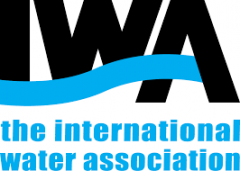Table of Contents
Active and upcoming Tasks Groups
- Good Modelling Practice in Water Resources Recovery Systems (GMP2)
- Membrane Bioreactor Modelling and Control (MBR_MC)
- Phototrophic system modelling (upcoming)
Active and upcoming Working Groups
- Modelling Integrated Urban Water Systems (MIUWS)
- Application of hybrid modelling in water and wastewater treatment (HM)
Completed Tasks Groups
- Greenhouse Gas Emission (GHG)
- Physical Chemical Modelling (P&C)
- Design Operation Uncertainty (DOUT)
- Benchmarking of control strategies for wastewater treatment plants (BSM)
- Good modelling Practice (GMP1)
Completed Working Groups
Task Group on Good Modelling Practice in Water Resources Recovery Systems (GMP2) (Active)
The IWA Task Group on Good Modelling Practice (GMP1) ended the preface of its Scientific and Technical Report (STR), Guidelines for Using Activated Sludge Models (Rieger et al., 2013), by saying:
“In the end we do not know how much of this report will be valid after 10 years, but wastewater modelling progresses rapidly, and we recommend that these guidelines be re-evaluated after a certain period of time”.
It is clear to anyone involved in the practice of modelling Water Resource Recovery Facilities (WRRFs) that the pace of change noted previously has continued. Given this, GMP1 members stimulate the continuation of the Good Modelling Practice Task Group, which should be revitalized in a Second IWA Task Group on Good Modelling Practice (GMP2).
The GMP2 is intended to evaluate the adoption of the previous STR, assess the state of WRRF modelling practice, and provide practitioners with updated and extended guidance to meet new challenges of the industry. Broadly, the motivations for this undertaking can be traced back to two root causes: broadening the focus of the first GMP STR, and the shift of focus from wastewater treatment to water resource recovery.
As in the GMP1 TG, GMP2 will focus exclusively on technical issues and will not promote any specific simulation software.
The focus of GMP2 TG will be:
- Expansion of Unified Protocol: the Unified Protocol presented in Guidelines for Using Activated Sludge Models covered and discussed all steps in a modelling project equally. There were some areas that could benefit from a revision and adaptation to current needs and changes in the industry, such as:
- Model set-up
- Calibration and validation of models
- Simulations
- Life cycle of models
- Accounting for Variability and Uncertainty in Models
- Considered Expansion of the Application Matrix
- Contact Person: Manel Garrido Baserba (mgbaserba-at-gmail.com)
- Website: in preparation
- IWA connect: in preparation
Task Group on Greenhouse Gas Emission (GHG) (Completed)
Use of modelling for minimising wastewater utility greenhouse gas footprints. The final objectives of the Task Group were twofold:
- Understand the processes that are responsible for the major contributions to GHG emissions from WWTP and sewer systems (e.g. heterotrophic denitrification, autotrophic nitrification, autotrophic denitrification, methanogenesis, etc.)
- Translate this knowledge into mathematical models that can be embedded in system/plant-wide models allowing multi-criteria optimisation
The STR has been published and is available here.

- Contact Person: Jose Porro
- Website: www.iwataskgroupghg.com
In order to achieve this, the following sub-objectives were embedded in a strategic overall approach to tackle the problem:
- Determine state-of-the-art, key players and ongoing projects in all scientific areas below; research gap identification: use existing facilitating channels like the Global Water Research Coalition (GWRC) as a means of coordination of research outputs from ongoing work, and providing research needs for future work
- Basic research nitrogen GHGs: build consensus on process mechanisms (preferably assisted by process modeling) and GHG yields under different conditions
- Model development nitrogen GHGs: translate research knowledge into mathematical models and embed them in ASM; design experiments needed for calibration of the additional model parameters; note that this needs close interaction with basic research (perhaps working through GWRC)
- Basic research methane: quantify methane emissions in sewers and those fractions introduced into the WWTP via the sewer and digester reject water; quantify methane stripping in biological reactors
- Model development methane: embed knowledge into ASM and hydraulic network models; design experiments needed for model calibration; note that this needs close interaction with basic research
- Full-scale monitoring: what can be measured with which accuracy; identify cases for detailed GHG measurement campaigns
- Plant-wide model – Benchmarking: full-scale model integration and calibration; multicriteria optimisation strategy development, including modeling and ICA for minimising N20, CH4, and indirect GHG emissions, as well as for maximising CH4 production in anaerobic digestion; testing of control strategies using a benchmark
approach extending the efforts of the current TG on Benchmarking of control strategies; and guidance on coupling with existing LCA tools
- Contact Person: Jose Porro
- Website: www.iwataskgroupghg.com
- IWA connect: Task Group on Use of Modelling for Minimizing GHG Emissions from Wastewater Systems (GHG)
Task Group on Physical Chemical Modelling (P&C) (Completed)
The task group was established to enhance our understanding and representation of physicochemical processes. These reactions occur naturally in aquatic environments, without the need for a microbial mediator. They are commonly used across the water industry cycle. Important examples include the use of alum for coagulation and phosphorous removal, unintentional scaling, gas transfer, and acid-base reactions. While an enormous amount of effort has been expended in developing and applying biological process models, models of physicochemical reactions are generally rudimentary and empirical. This greatly limits our ability to effectively manipulate and utilise these processes. In fact, the fundamentals are reasonably well known, but have not been systematically assessed in the water and wastewater area. The task group will develop a physicochemical framework with high predictive capacity that is usable across the range of unit operations by both modelers and end-users.
The STR has been published and is available in open access here.
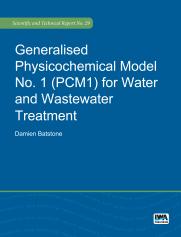
- Contact Person: Damien Batstone
- IWA connect: Task Group on Generalized Physicochemical Framework
Task Group on Membrane Bioreactor Modelling and Control (MBR_MC) (Active)
Several models for MBR-based systems have been presented in the literature in order to explain the peculiarities of these systems. Despite the efforts performed in MBR modelling, this topic is not fully matured yet and need further work. There is not a consensus regarding the use of a “standard” and well established mathematical model able to describe also the fouling phenomena.
The main motivation for the initiation of the Membrane Bioreactor Modelling and Control Task Group (TG) is to lead the research community towards standardised criteria to model MBR systems. The final objectives of the TG are threefold:
- Propose standardised criteria to integrate biological, filtration and energy models for modelling of MBR-based systems
- Set-up a database that can be used for plant-wide modelling, control and optimisation of MBR-based systems.
- Propose guidelines to apply appropriate models to be used for different purposes, such as: academic research, environmental and economic sustainability assessment, and control and multi-criteria optimisation of MBR systems.
The Task Group is also related to the activities of the IWA Specialist Group: Instrumentation, Control and Automation (ICA).
- Contact Person: Giorgio Mannina (University of Palermo, Italy)
- IWA Connect: Task Group on Membrane Bioreactor Modelling and Control
Working Group on Modelling Integrated Urban Water Systems (MIUWS) (Active)
The interest of the WG comprises the integration of models of all components of the water cycle in urban areas, including the waste, nutrients and energy cycles for the various operational processes as they relate to the water cycle. The main focus lies on model and software integration issues, e.g. on how to solve integration problems and how to exploit integration opportunities. Modelling is in this context mostly intended for decision support, not for process understanding.
The main aims of the WG are to promote the exchange of ideas and experiences regarding the use and development of tools and methods for MIUWS, and to build a network of experts in the field. Collaboration will be sought with other IWA groups focused on closely related topics, e.g. urban drainage, LCA, etc. and with WEF committees (e.g. Collection Systems).
- Contact Person: Peter M. Bach
- Website: www.miuws.org
- IWA Connect: Working Group – Modelling of Integrated Urban Water Systems (MIUWS)
Working Group on Computational Fluid Dynamics (CFD) (Completed)
The main aims of the WG were to:
- promote the exchange of ideas and experiences regarding the use of Computational Fluid Dynamics in the field of water and wastewater treatment and
- build a network of experts in the field.
The STR has been published and is available here. Its editors are Julien Laurent, Randal Samstag, Jim Wicks and Ingmar Nopensand. It provides in-depth fundamentals and guidelines regarding Computational Fluid Dynamics (CFD) simulations of Water Resources Recovery Facilities (WRRFs) unit processes (e.g. headworks, aerobic and anaerobic biological reactors, settling tanks, disinfection).
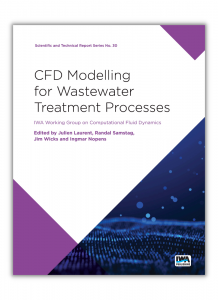
- Contact Person: Julien Laurent
- Website: https://rsamstag.com/downloads-2/iwa-cfd-working-group-documents/
Working Group on Good Modelling Practice (GMP) (Completed)
The scope of the Good Modelling Practice (GMP) Working Group (WG) was to continue the work of the former IWA GMP TG in promoting the use of numerical modelling of wastewater treatment plants in general and of activated sludge plants in particular. The GMP WG was the platform for promoting GMP in the long-term perspective.
The objectives of the GMP WG are
- To organise and run courses on Modelling Activated Sludge Plants (in conjunction to IWA conferences) to promote “Good Modelling Practice” (see IWA STR No.22),
- to disseminate the content of the GMP STR to the field
Based on the objectives, the tasks and responsibilities of the GMP WG are
1. Courses on Modelling Activated Sludge Plants
2. Initiate and support a follow-up IWA Task Group on the topic of “Good Modelling Practice”
- Contact Person: Guenter Langergraber
Working Group on Hybrid Modelling in Water and Wastewater Treatment (HM) (Active)
Rationale
Modelling of water and wastewater treatment systems has been carried out with two different approaches: Mechanistic and data-driven. Mechanistic knowledge encapsulated in a set of mathematical equations describes a system or process derived from a fundamental understanding of its underlying mechanisms based on physical, chemical and biological laws or causal relations. A common example of mechanistic models in wastewater treatment process modelling are the activated sludge models. These models are robust in system identification, analysis of the causal pathways, hypothesis testing, nowcasting and forecasting, and scenario analysis. There is much value in this approach; however, mechanistic model inaccuracies have undoubtedly resulted in design conservatism that has come in form of more concrete and oversized motors. Time-consuming and costly experiments are often required to develop and maintain a well-performing mechanistic model. On the other hand, data-driven modelling approaches derive knowledge from patterns encapsulated in measured data and their associated metadata. In contrast to mechanistic models, easy-to-measure data is processed in large quantity. They commonly show strong performance in complex, multi-dimensional mapping and scaling to big data; however, they often lack sufficient interpretability of the results and explainability of the model mechanisms.
Research works towards the fusion of these two modelling worlds have excellent potential for academia and industry in the era of big data and considering the recent advancements in data collection, transmission, processing, and storage. In the context of this proposal, we call the fusion of mechanistic and data-driven models hybrid modelling (HM). HM is a paradigm in which different modelling techniques are used in the same workflow. Considering the ever-growing interest in applying data-driven models in critical systems influencing human and environmental health, such as in the water and wastewater treatment sectors, one can find critical opinions regarding the accountability, safety, and reliability of purely data-driven methods. Hence, we propose starting a hybrid modelling working group (HMWG) to promote the application and the development of hybrid models in the water and wastewater treatment sectors. Available studies on the application of HM in wastewater and water treatment sectors differ in various ways: The purpose of model hybridisation, the structure in which both components are combined, the degree to which these are coupled, the architecture of the data-driven components, level of abstraction in the mechanistic models, the degree to which prior knowledge remains satisfied (e.g., mass balances), and incorporation of HM in wastewater treatment plant controllers or digital twins. Digital twins, a current trend, requires a very high predictive power, typically on a short timescale for real-time scenario analysis. Assuming sufficient high-quality data is available, this time frame is exactly the ecosystem in which hybrid models can perform very well. The working group plans to provide guidance to coordinate such approaches systematically.
Objectives
The HMWG will have four primary objectives:
- To regularly disseminate the latest work on the application of HM in the water and wastewater treatment sectors. The first step toward this goal has already been taken by publishing an article about the state of the art of HM in the water and wastewater sector1. This can be continued by publishing periodic status updates as research or review articles (e.g. every three years).
- To investigate terminological details of the technical and scientific contexts related to the applications of HM among water experts. Effective and harmonised scientific terminologies can be proposed to be used by mechanistic and data-driven modellers.
- To facilitate the exchange of early ideas and experiences, build a network of experts in the field, and give feedback on a level that might not be possible in the individual research groups especially in such groups where only one person focuses on HM.
- To identify gaps in current knowledge and practices and highlight pressing issues such as data quality and metadata collection in a machine-interpretable way. The potential impacts of these issues on the application of HM in the water and wastewater treatment sector will be investigated.
Additionally, the following goals can be achieved in the foreseeable future depending on the level of members’ contributions:
- To create an open-source platform with a Git repository, where projects are shared and reviewed by other hybrid modellers.
- To develop a test case study of hybrid modelling or openly shared data with which other researchers can test their methods.
Contact persons
Chair: Mariane Schneider
Vice-chair: Jun-Jie Zhu
Task Group on Design Operation Uncertainty (DOUT) (Completed)
The goal of the IWA task group was to summarise the work that has already been done on the topic of uncertainty evaluation in wastewater treatment and identify gaps in available methods or knowledge. It has built on the knowledge already acquired by certain key efforts in the wastewater field. In addition, the project intended to incorporate work done in related fields such as water resources management. The study intended to bring together the collective knowledge of engineers, academics and plant owners, from several countries and continents.
The goals of the group can be summarised as follows:
- Propose a common language for communicating on the subject.
- Propose a comprehensive list of the sources of uncertainty.
- Document and evaluate existing methods for assessing and evaluating uncertainty (quantitative and qualitative).
- Incorporate knowledge from other fields (water resources, atmospheric science, nuclear industry, etc.) on applications of uncertainty evaluation methodologies.
- Identify gaps in current knowledge. Define the developments required to provide adequate tools to implement uncertainty evaluations in projects.
- Contact Person: Lina Belia
The STR has been published: paperback or e-book.
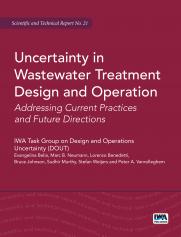
Working Group on Life Cycle Assessment (LCA) (Completed)
The Working Group for Life Cycle Assessment of Water and Wastewater Treatment (LCA-Water WG) has facilitated the exchange of ideas, and has developed consensual methodologies, to promote better use of LCA in the urban water systems.
- Contact Person: Lluís Corominas
- IWA connect: Working Group for Life Cycle Assessment of Water and Wastewater Treatment (LCA-Water WG)
Task Group on Benchmarking of control strategies for wastewater treatment plants (BSM) (Completed)
The goal of the Task Group was to promote the use of the benchmark simulation protocols (BSM1, BSM1_LT and BSM2) and produce a Scientific and Technical Report (as part of IWA Publishing’s series). In the mid-90s, the IWA Task Group on Respirometry began the work on the development of a simulation-based protocol (a ‘simulation benchmark’) that would be used for the objective comparison and evaluation of wastewater treatment plant control strategies. The main reason for initiating this work was the discovery that over the years numerous WWTP control strategies had been proposed in the literature, however, the literature did not provide a clear basis for comparison of these strategies because of the many confounding influences that have an impact on the systems.
The ‘benchmark protocol’, is defined in terms of a comprehensive description of
a standardised simulation and evaluation procedure including plant layout, simulation models and model parameters, a detailed description of disturbances to be applied during testing and evaluation criteria for testing the relative effectiveness of simulated control and monitoring strategies. The success of the BSMs in terms of publications (already more than 500) and the large number of research groups world-wide requesting access to the tools are strong indications of the need for this research.
The Scientific and Technical Report (STR) was published in 2014 and the 15 associated Technical Reports are currently being polished and thereby the efforts of the BSM Task Group are finished. In addition, the software is being ‘polished’. Matlab versions of BSM1 and BSM2 are available for free download and also an updated version of the ADM1 including ionic strength, activity and ion pairing (contact Ulf Jeppsson).
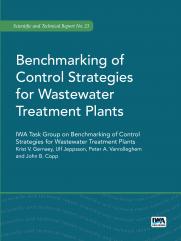
An associated tool – the influent wastewater generator model (Matlab) – is also freely available (contact Dr Krist V. Gernaey). A preliminary software version of an extended BSM2 including a catchment model and sewer system model (published in Environmental Modelling and Software, volume 78, pp. 16-30) is also available. However, as there are so many ongoing activities and development related to the BSM framework and its extensions (greenhouse gas emissions, micro-pollutants and illicit drugs, physico-chemical activity, pH, precipitation, phosphorus, sulphur, inclusion of sewer and receiving water quality models, resource recovery) it is our intent to set up another ‘umbrella’ for organising the BSM efforts by all the different research groups involved. At a workshop at the WWC2014 in Lisbon, Portugal there was consensus on the need for creating an IWA Working Group on “Benchmarking of control and monitoring strategies for urban wastewater systems”. Support for such an initiative has been granted by both the ICA and the MIA specialist groups.
- Draft description of BSM1
- Draft description of BSM2
- More details on http://www.benchmarkwwtp.org
